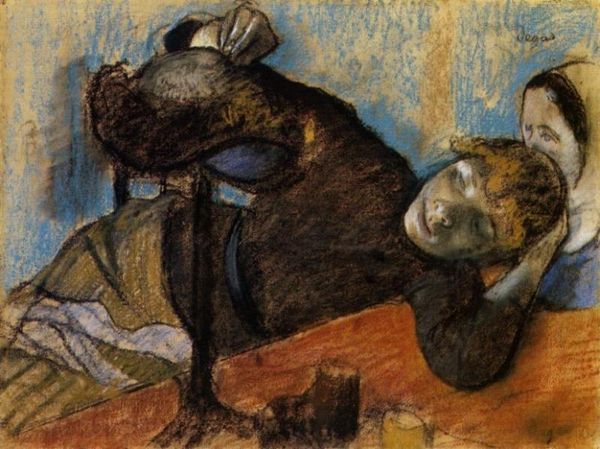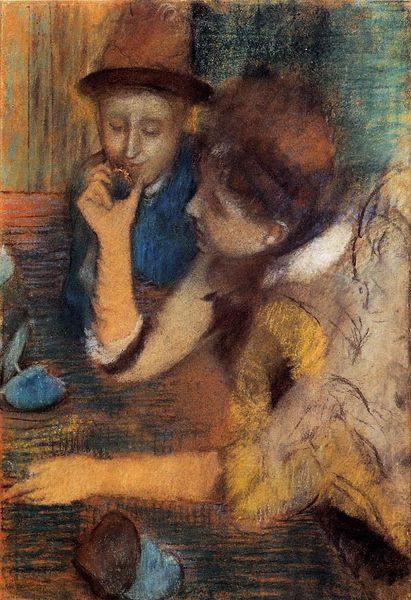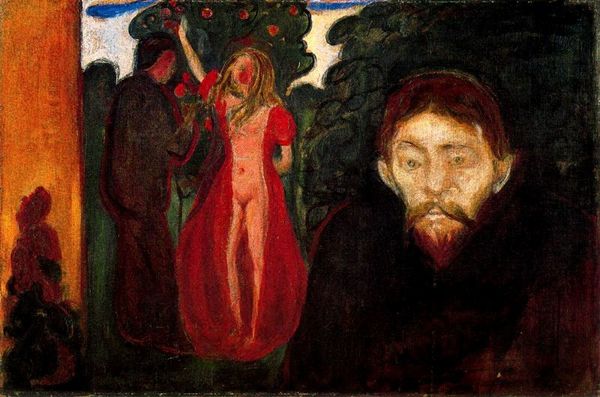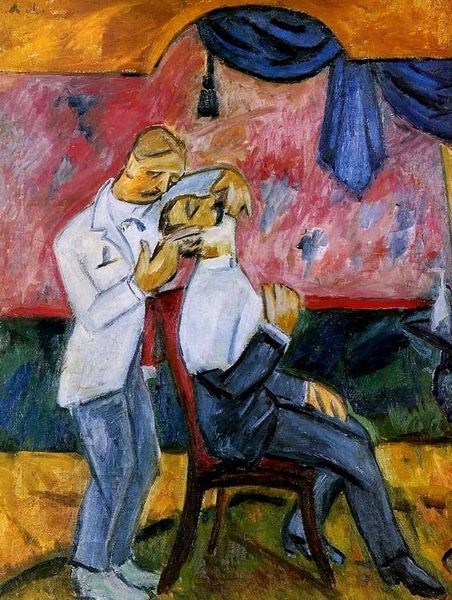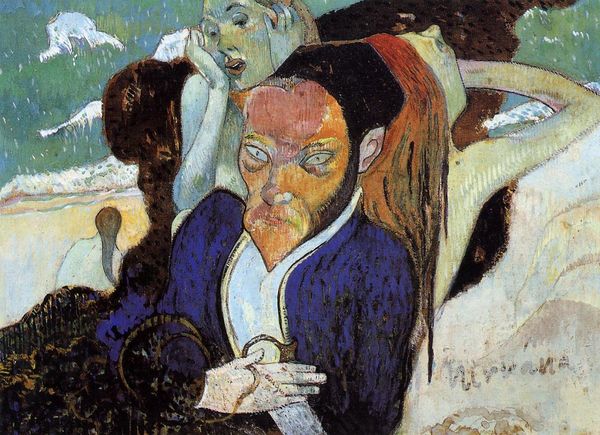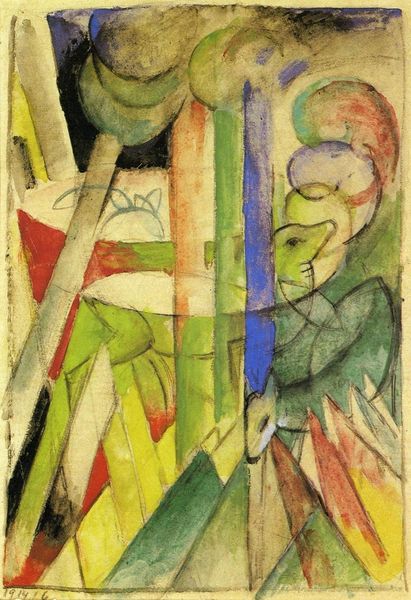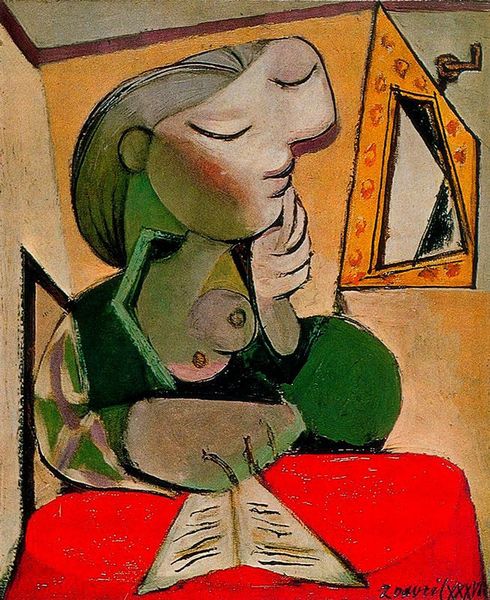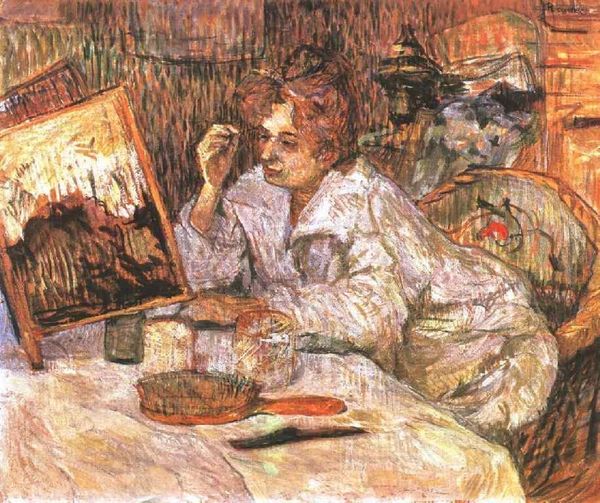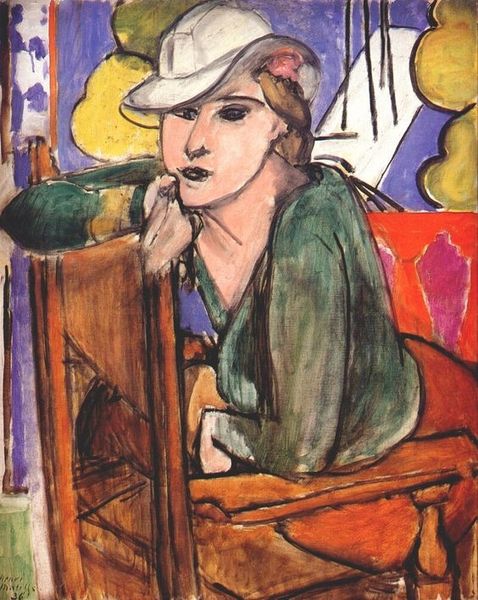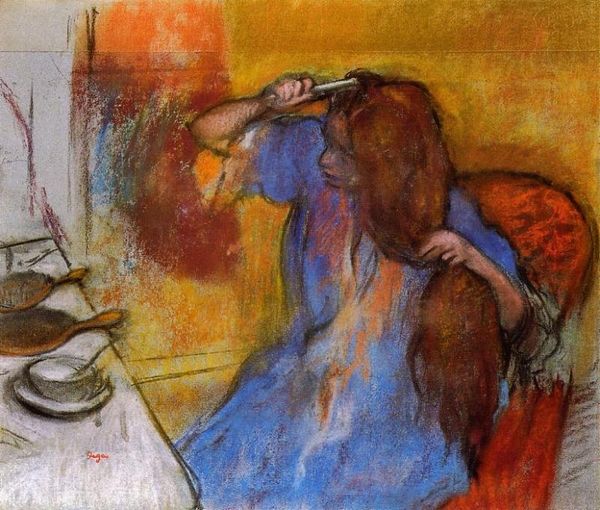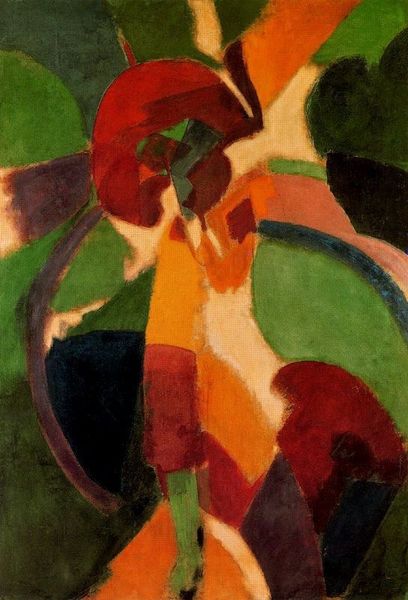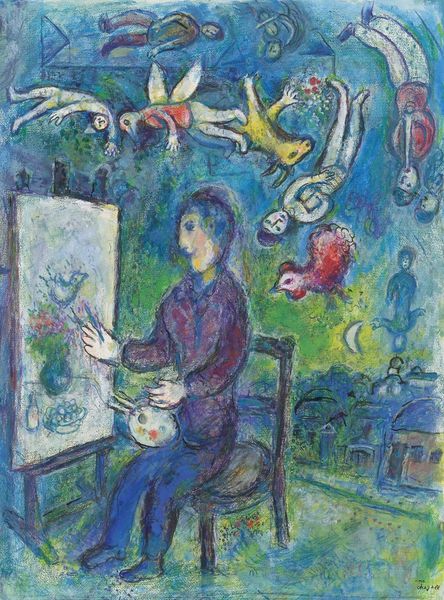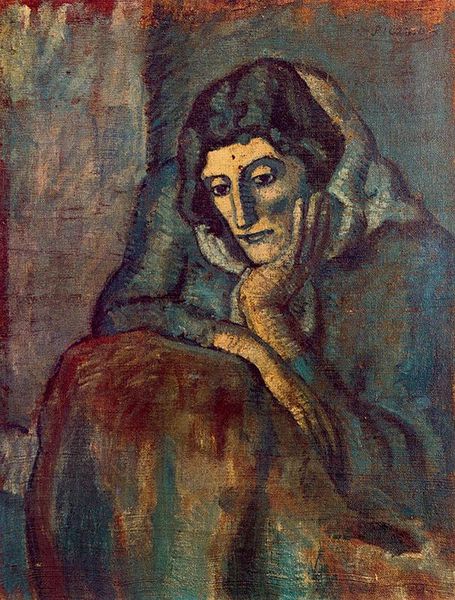
Portrait of Meijer de Haan by Lamplight 1889
0:00
0:00
paulgauguin
Museum of Modern Art (MoMA), New York City, NY, US
painting, oil-paint, impasto
#
portrait
#
self-portrait
#
painting
#
oil-paint
#
oil painting
#
impasto
#
famous-people
#
intimism
#
symbolism
#
facial portrait
#
post-impressionism
#
portrait art
#
modernism
Dimensions: 80 x 52.5 cm
Copyright: Public domain
Curator: Editor: This is Paul Gauguin's "Portrait of Meijer de Haan by Lamplight," painted in 1889 using oil on canvas. It's a striking piece. The color palette is intense, and De Haan’s gaze is quite unnerving. What strikes you about it? Curator: The density of the impasto betrays the labor involved. Think about the societal value placed upon artists during this era – often romanticized as solitary geniuses – yet the physical act of creating something like this, the raw materiality of the paint itself, challenges that perception. What kind of narrative does this intense materiality suggest to you? Editor: That’s a very good point. It almost seems subversive, highlighting the labor involved against this romantic backdrop. Could it be a commentary on the societal pressures placed on artists, perhaps especially those outside the Salon system? Curator: Precisely! Consider also the context: Gauguin painted this in Brittany. How might their artistic relationship and living conditions contribute to a critique of bourgeois values of art production and consumption? The presence of what seem to be written notebooks draws attention to collaborative processes. What can you infer about artistic exchange from this, pushing beyond the image of the lonely artist? Editor: So it's not just about *what* is painted, but *how* it’s painted, and what the painting tells us about the artistic and social circumstances. It definitely complicates the idea of Gauguin as simply a Post-Impressionist. Curator: Yes, the deliberate flaunting of materials and attention to the work involved reveals social and economic tensions beneath the surface. Perhaps this painting invites us to re-evaluate labor not only in art production but society generally. Editor: I see this painting in a completely new light now. It makes me reconsider everything I assumed about Gauguin’s art, it encourages us to think about collaborative and lived experience which might be missed without thinking about materiality.
Comments
No comments
Be the first to comment and join the conversation on the ultimate creative platform.
